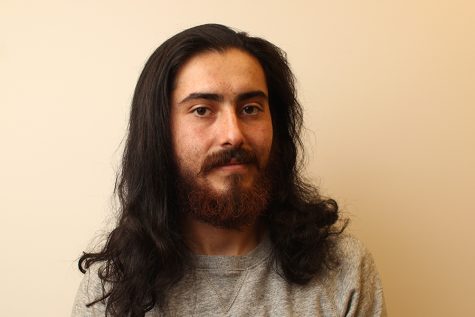Cultural ‘melting pot’ culminates
Local area provides Contra Costa College with cultural stew
May 17, 2015
Elements that make this campus a culturally diverse and thriving educational experience begins with its students, faculty and administrators.
This diversity, however, is not limited to various ethnicities, ages, or genders of people on campus, but resonates into the many facets that make Contra Costa College a unique place nestled half in San Pablo and half in Richmond, California.
Dean of Student Services Vicki Ferguson said diversity at CCC goes beyond the make up of its 6,700 students.
“CCC is a melting pot of all the different students who represent the Bay Area and the local community as well,” Ferguson said. “It provides us with the ability to love a place that is so diverse and this diversity is represented through the different programs and departments on campus.”
The variety of people and their cultures is the crux to why so many different programs are in place at the college, and this student makeup creates one of the most culturally eclectic campuses in the district, state and national levels.
Interim President Mojdeh Mehdizadeh said while working at sister school Diablo Valley College there was a constant push to create a culturally diverse student populous, but such is not the case at this campus. It already exists.
Administration of justice department Chairperson Richard Ramos said while CCC is the most diverse community college in the state, it also faces a “challenge” that is unique to urban campuses throughout the state.
“(CCC) has a greater number of first generation students who are underprepared than most colleges in California,” Dr. Ramos said. “I’m the son of a Mexican immigrant and as a first generation student my only pathway to higher education was through a community college.
“Contra Costa College provided me with an opportunity that I would not have had otherwise, like many of the students here today.”
The percentage of first-generation college students — those whose parents and grandparents did not attend college — at CCC is 48.7 percent, according to the California Community College Chancellor’s Office Student Success Scorecard for the 2013-14 year.
This is due to the high number of immigrants coming to the Bay Area from places such as South and Central America, Africa, Asia, Polynesia, the Middle East and various other regions of the world.
Mehdizadeh said to better prepare first generation college students a districtwide Convocation on Innovation Conference was held early this year to discuss ways to ensure these students’ academic success, be it in transfer to four-year colleges or earning career technical education certificates.
“We want to create a summer bridge program for first generation college students,” she said. “A lot of students (at CCC) are testing into remedial courses. So we want to create a program for those students that will keep them together so they can provide each other with peer support.”
And according to the Chancellor’s Office online DataMart, the percentages of African-American, Asian/Filipino, Hispanic and white students at CCC during the fall 2014 semester were 23.8, 20.5, 34.8 and 11.6 percent, respectively.
Compare CCC’s cultural diversity with DVC, or its other sister school Los Medanos College, and the makeup of their student populations are not nearly as diverse.
Ramos said the cultural demographics are reflective of the high schools in each college’s service area. CCC has “the most diverse” reserve of students in the K-12 system, which spans from Pinole to El Cerrito, in the district and is what makes it a unique learning center.


